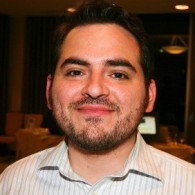If you’re a sausage lover, crafting your own sausage can be a rewarding and satisfying experience. However, sometimes, things don’t go as planned, and you end up with dry and crumbly sausage that’s not enjoyable to eat.
In such cases, it’s essential to know how to moisten dry sausage and prevent it from happening again.
In this article, we’ll discuss various methods to fix dry sausage and steps to prevent it from happening.

Table of Contents
How to Moisten Dry Sausage: Tips and Tricks
We’ll explore some of the best tips and tricks to help you improve the texture and taste of your dry sausage.
Adding Gelatin Powder or Fat to Sausage Meat
When you’re crafting your sausage, and you notice that the meat looks excessively dry, there are two key ingredients that can come to your rescue: gelatin powder and fat. These additions can work wonders in transforming your sausage from dry and lackluster to juicy and flavorful.
Gelatin Powder: Incorporating gelatin powder into your sausage mixture is a smart move. This magical ingredient has the power to retain moisture as the sausage cooks, ensuring that each bite is succulent and bursting with flavor.
Fat: Another option is to add ground bacon or fat back to the sausage mixture. Not only does this remedy dryness, but it also imparts a rich, savory flavor that elevates your sausage to new heights of culinary delight.
Rehydrating Cooked Dry Sausage
If you’ve already cooked your dry sausage and find it to be parched, fear not; there are effective methods to bring it back to life.
Soaking Method: One approach is to soak the sausage in a liquid of your choice, such as meat stock, beer, wine, or even water. Here’s how to do it:
- In a saucepan or small pot, bring one cup of stock and one cup of wine to a gentle boil.
- Reduce the heat to medium-low.
- Add and cover the sausage with a lid.
- Let it simmer for approximately 10-15 minutes.
- If the sausage remains too firm, extend the simmering time until it achieves the desired level of softness and moisture.
Steaming Method: Alternatively, you can steam the sausage for approximately 20-30 minutes. This gentle cooking method infuses the sausage with moisture, revitalizing its texture.
Moist Towel Technique: Another ingenious technique involves wrapping in a moist towel and storing the sausage in the refrigerator for a few days. Over time, the sausage will absorb the moisture from the towel, becoming soft and succulent once more.

Repurposing Dry Sausage
Should your attempts to rehydrate your sausage fall short, don’t despair. It can still find its way into a multitude of culinary creations.
Soups, Chili, Gumbo, and Stews: It still can be a fantastic addition to liquid-based dishes such as soups, chili, gumbo, or stews. Its bold flavors will infuse your dishes with a savory punch.
Jambalaya and Rice Dishes: Try incorporating it into a flavorful jambalaya or a rice dish. Its smoky and robust taste pairs wonderfully with rice and various spices.
Bolognese Sauce: Transform your sausage into a delectable bolognese sauce. Simmer it with tomatoes, herbs, and spices, then serve it over pasta for a satisfying meal.
Let your culinary creativity shine!
Can You Cook Dry Sausage?
Certainly! It can be cooked, but it’s typically considered an uncooked sausage. If your homemade sausage is too dry and crumbly, you can cook it further to help alleviate the dryness.
Why are My Homemade Sausages Dry? and How to Fix It
In this informative section, we’ll delve into the common reasons behind dry homemade sausages and provide effective solutions to ensure they turn out succulent and flavorful.
Improper Fat to Meat Ratio: The Key Culprit
One of the primary culprits behind dry homemade sausage is an improper fat-to-meat ratio. Achieving the right balance is crucial when crafting sausage.
When using lean meats such as chicken or lamb, it’s essential to introduce fat into the mixture. Pork fat, with its high fat content and flavor-enhancing qualities, is an excellent choice.
Pro Tip: Aim to incorporate approximately 30% fat when making sausage. Failing to use enough fat can lead to dry, crumbly sausages with compromised flavor.
The Liquid Ratio: The Second Culprit
The type and quantity of liquid in your meat mixture can also impact the moisture level of your sausage. Some sausage makers have observed that ingredients like vinegar and wine, often used in sausages like chorizo, can contribute to dryness.
Instead of these ingredients, consider using water to maintain moisture.
Recommended: If you opt for water, it’s essential to gauge the right amount. As a general guideline, begin by adding 1/2 cup of water and then adjust as necessary.
For precise measurements, we suggest adding 1 cup or 8 ounces of water to every 5 pounds of sausage meat. This ratio should strike a balance between moisture and texture, ensuring they are neither overly wet nor tough.
The Grinding Technique: The Third Culprit
Your grinding technique significantly influences the texture and juiciness. During the grinding process, friction generates heat, which can cause the fat to separate from the meat, resulting in a mushy texture. Moreover, much of the fat may be rendered out during cooking, leaving you with dry sausages.
To prevent this, take the following steps to ensure your meat and fat are adequately mixed:

Chill Before Grinding: Prior to grinding, ensure both the meat mixture and grinder components are thoroughly chilled. This keeps the fat solid and evenly distributed within the meat.
- Place meat and the grinder neck inside the freezer for a minimum of 30 minutes.
- Use meat that is at least refrigerator temperature, if not partially frozen.
- If grinding the meat multiple times, place the meat bowl in the freezer between grinds or set the receiving bowl in another larger bowl filled with ice to maintain a cold temperature.
- If you’re using a detachable stuffer, also place the stuffer in the freezer.
Grind in Stages: Consider starting with a coarse grind and then proceeding with a finer grind for improved texture and better incorporation of fat.
Post-Grinding Mixing: After grinding, meticulously mix the sausage meat until it attains a sticky consistency. Avoid kneading based on a specific time frame; continue kneading until it becomes appropriately sticky.
Proper Mixing Technique: The Fourth Culprit
Improper mixing technique post-grinding can also lead to dry sausages. Once you’ve added the desired spices and ground the meat, ensure that you mix and work the sausage meat adequately until it reaches the right consistency.
Pro Tip: To test the consistency, place a small amount of meat on your hand, and then turn your hand upside down. The meat should adhere and not drop off, indicating that it has been mixed to perfection.
In Summary
To fix dry sausages, you can try cooking them further, adding moisture, or adjusting the fat to meat ratio. You can also check your grinding technique to make sure the fat stays suspended in the meat, and mix the sausage meat properly until it becomes sticky.
By following the tips mentioned in this article, you can moisten your dry sausage and enjoy it once again.
And don’t forget to always store it in a cool, dry place to prevent it from spoiling.
>>Related Post: Sausage Balls Are Too Dry
Dried Sausage
Sausage, Sausage, Sausage, Cured, Fix dry sausage, Sausages, Flavor.
Fat and meat, meat, meat, dry, cured, cured, problem, smoked, drying, one, people, bacon, things, things, bit, thing, spice blends, pork, pork, curing, salt, starter, amount of liquid, dry after cooking, meat grinder, meat in the freezer, meat if these options don’t, make sure it’s, lean meat like chicken, meat like chicken or lamb, add pork fat, sure that the meat mixture, meat and grinder are chilled, make sure that the meat, game meat, high in fat, recommended meat, bowl of meat, followed by a smaller grind, ratio of fat, meat with pork.

Fernando is the creator and writer behind the food blog Eating with your Hands. Living and working in cities like Paris, Barcelona, and Berlin, and being married to a Canadian foodie, has given Fernando a passion and interest in food and inspired him to run EWYH.
